UNIT 3.1
THE SCOPE OF MANAGERIAL ECONOMICS
DEFINITION
Managerial economics refers to the application of economic theory and the tools of analysis of decision science to examine how an organization can achieve its aims or objectives most efficiently.
The meaning of this definition can best be examined with the help of following diagram
|
|
Management decision problems arise in any organization—be it a firm, a not-for-profit organization such as hospital or university, or a government agency—when it seeks to achieve some goal or objective subject to some constraints. For example, a firm may seek to maximize profits subject to limitations on the availability of essential inputs and in face of legal constraints. A hospital may seek to treat as many patients as possible at an "adequate" medical standard with its limited physical resources and financial constraints it faces. The goal of a university may be to provide an adequate education to as many students as possible, subject to the physical and financial constraints it faces. The goals and constraints may differ from case to case, but the basic decision making process is the same.
RELATIONSHIP TO ECONOMIC THEORY
The organization can solve its management decision problems by the application of economic theory and the tools of decision science. Economic theory refers to microeconomics and macroeconomics. Microeconomics is the study of the economic behavior of individual decision-making units, such as individual consumers, resource owners, and business firms, in a free-enterprise system. Macroeconomics, on the other hand, is the study of the total or aggregate level of output, income, employment, consumption, investment, and prices for the economy viewed as a whole. Although the (microeconomic) theory of the firm is the single most important element in managerial economics, the general macroeconomic conditions of the economy (such as the level of aggregate demand, rate of inflation, and interest rates) within which the firm operates are also very important.
Economic theories seek to predict and explain economic behavior. Economic theories usually begin with a model. This abstracts from the many details surrounding an event and seeks to identify a few of the most important determinants of the event. For example, the theory of the firm assumes that the firm seeks to maximize profits, and on the basis of that it predicts how much of a particular commodity the firm should produce under different forms of market structure or organization. While the firm may have other (multiple) aims, the profit-maximization model accurately predicts the behavior of firms, and, therefore, we accept it. Thus, the methodology of economics is to accept a theory or model if it predicts accurately and if the predictions follow logically from the assumptions.
RELATIONSHIP TO THE DECISION SCIENCES
Managerial economics is also closely related to the decision sciences. These use the tools of mathematical economics and econometrics to construct and estimate decision models aimed at determining the optimal behavior of the firm (i.e., how the firm can achieve its goals most efficiently). Specifically, mathematical economics is used to formalize (i.e., to express in equational form) the economic models postulated by economic theory. Econometrics then applies statistical tools (particularly regression analysis) to real-world data to estimate the models postulated by economic theory and for forecasting.
For example, economic theory postulates that the quantity demanded (Q) of a commodity is a function of or depends on the price of the commodity (P), the income of consumers (Y), and the price of related (i.e., complementary and substitute) commodities (Pc and Ps, respectively). Assuming constant tastes, we may postulate the following formal mathematical model:
Q =ƒ (P,Y,Pc,Ps)
By collecting data on Q, P, Y, Pc, and Ps for a particular commodity, we can then estimate the empirical (econometric) relationship. This will permit the firm to determine how much Q would change by a change in P,Y, Pc, and P^ tad to forecast the future demand for the commodity. This information is essential in order for management to achieve the goal or objective of the firm (profit maximization) most efficiently.
To conclude, "managerial economics" refers to the application of economic theory and decision science tool to find the optimal solution to managerial decision problems.
RELATIONSHIP BUSINESS ADMINISTRATION STUDIES
Having defined the subject matter of managerial economics and its function, we can now examine the relationship between managerial economics and the functional area of business administration studies. The latter include accounting, finance, marketing, personnel or human resource management, and production. These disciplines study the business environment in which the firm operates and, as such, they provide the background for managerial decision making. Thus, managerial economics can be regarded as an overview course that integrates economic theory, decision sciences, and the functional areas of business administration studies and it examines how
they interact with one another as the firm attempts to achieve its goal most efficiently.
RELATIONSHIP TO INTERNATIONAL ECONOMICS
In present era of globalization business decision process does not complete in a closed economic environment rather all managerial decisions affect and are effected by the competitors from the other countries as well. Expansion of e-commerce and free trade regimes require that all managerial decisions must be made based on the knowledge of international economic and international business.
RELATIONSHIP TO INFORMATION TECHNOLOGY
Information technology is now at the basis of all decision making process. It is simply because now decision making is a scientific process and it involves the use and analysis of all relevant data related to managerial problem. Therefore efficient solution to a managerial problem canonly be found through the use of information technology.
Most students taking managerial economics are likely to have some knowledge of some of the topics presented and tools of analysis used in managerial economics. While reviewing these topics and studying the others, the student should pay particular attention to the overall decision-making process by which the firm can achieve its objective, since. this is the ultimate goal of managerial economics.
In short, managerial economics is not the study of a number of independent topics but the use of economic theory and management science tools to examine how a firm, can achieve its objective most efficiently within the business environment in which it operates.
DEMAND ESTIMATION
MARKET RESEARCH APPROACHES TO DEMAND ESTIMATION
Many market research approaches are used for estimation of demand. Following are the most important of these.
1. Consumer surveys and Observational Research
2. Consumer clinics, and
3. Market experiments.
Here we briefly examine these methods and point out their advantages and disadvantages and the conditions under which they might he useful to managers and economists.
1. CONSUMER SURVEYS AND OBSERVATIONAL RESEARCH
Consumer surveys involve questioning a sample of consumers about how they would respond to particular changes in the price of the commodity, incomes, the price of related commodities, advertising expenditures, credit incentives and other determinants of demand. These surveys can be conducted by simply stopping and questioning people at a shopping center or by administering sophisticated questionnaires to a carefully constructed representative sample of consumers by trained interviewers.
In theory, consumer questionnaires can provide a great deal of useful information to the firm. In fact, they are often very biased because consumers are either unable or unwilling to provide accurate answers. For example, do you know how much your monthly butter consumption would change if the price of butter rose by 10 cents per 100 gms.? If a butter producer doubled its advertising expenditures? If the fat content of butter were reduced by 1 percent? Even if you tried to answer these questions as accurately as possible, your reaction might be entirely different if actually faced with any of the above situations. Sometimes consumers provide a response that they deem more socially acceptable rather than disclose their true preferences.
Depending on the size of the sample and the elaborateness of the analysis, consumer surveys can also be expensive.
Because of the shortcomings of consumer surveys, many firms are supplementing or supplanting consumer surveys with observational research. This refers to the gathering of information on consumer preferences by watching them buying and using products. For example, observational research has led some automakers to conclude that many people think of their cars as art objects that are on display whenever they drive them.
Observational research does not, however, render consumer surveys useless. Sometimes consumer surveys are the only way to obtain information about possible consumers' responses. For example, if a firm is thinking of introducing a new product or changing the quality of an existing one, the only way that the firm can test consumers' reactions is to directly ask them since no other data are available. From the survey, the researcher then typically tries to determine the demographic characteristics (age, sex, education, income, family size) of consumers who are most likely to purchase the product. The same may be true in detecting changes in consumer tastes and preferences and in determining consumers' expectations about future prices and business conditions. Consumer surveys can also be useful in detecting consumers' awareness of an advertising campaign by the firm. Furthermore, if the survey shows that consumers arc unaware of price differences between the firm's product and competitive products, this may be a good indication that the demand for the firm's product is price inelastic.
2. CONSUMER CLINICS
Another approach to demand estimation is consumer clinics. These are laboratory experiments in which the participants are given a sum of money and asked (to spend it in a simulated store to see how they react to changes in the commodity price, product packaging, displays, price of competing products, and other factors affecting demand. Participants in the experiment can be selected so as to closely represent the socioeconomic characteristics of the market of interest. Participants have an incentive to purchase the commodities they want the most.
The, consumer clinics are more realistic than consumer surveys. By being able to control the environment, consumer clinics also avoid the pitfall of actual market experiments which can be ruined by extraneous events.
Consumer clinics also have serious shortcomings, however. First, the results are questionable because participants know that they are in an artificial situation and that they are being observed. Therefore, they are not very likely to act normally, as they would in a real market situation. For example, suspecting that the researchers might be interested in their reaction to price changes, participants are likely to show more sensitivity to price changes than in their everyday shopping. Second, the sample of participants must necessarily be small because of the high cost of running the experiment. Inferring, however, a market behavior from the results of an experiment based on a very small sample can be dangerous. Despite these disadvantages, consumer clinics can provide useful information about the demand for the firm's product, particularly if consumer clinics are supplemented with consumer surveys.
3. MARKET EXPERIMENTS
Unlike consumer clinics, which are conducted under strict laboratory conditions, market experiments are conducted in the actual marketplace. There are many different ways of performing market experiments. One method is to select several markets with similar socioeconomic characteristics, and change the commodity price in some markets or stores, packaging in other markets or stores, and the amount and type of promotion in still other markets or stores, and record the different responses (purchases) of consumers in the different markets. By using census data or surveys for various markets, a firm can also determine the effect of age, sex, level of education, income, family size, etc., on the demand for the commodity. Alternatively, the firm could change, one at a time, each of the determinants of demand under its control in a particular market over time and record consumers' responses.
The advantage of market experiments is that they can be conducted on a large scale to ensure the validity of the results and consumers are not aware that they are part of an experiment. Market experiments also have serious disadvantages, however One of these is that in order to keep costs down, the experiment is likely to be conducted on too limited a scale and over a fairly short period of time, so that inferences about the entire market and for a more extended period of time are questionable. 'Extraneous occurrences, such as a strike or unusually bad weather, may seriously bias the results in uncontrolled experiments. Competitors could try to sabotage the experiment by also changing prices and other determinants of demand under their control. They could also monitor the experiment and gain very useful information that the firm would prefer not to disclose. Finally, a firm may permanently lose customers in the process of raising prices in the market where it is experimenting with a high price.
Despite these shortcomings, market experiments may be very useful to a firm in determining its best pricing strategy and in testing different packaging, promotional campaigns, and product qualities. Market experiments are particularly useful in the process of introducing a different product, where no other data exist. They may also be very useful in verifying the results of other statistical techniques used to estimate demand and in providing some of the data required for these other statistical techniques of demand estimation.
DEMAND FORECASTING
QUALITATIVE FORECASTS
Surveys and opinion polls are often used to make short-term forecasts when quantitative data are not available. These qualitative techniques can also be useful for supplementing quantitative forecasts that anticipate changes in consumer tastes or business expectations about future economic conditions. They can also be invaluable in forecasting the demand for a product that the firm intends to introduce. Following are important methods used for forecasting demand.
SURVEY TECHNIQUES
The rationale for forecasting based on surveys of economic intentions is that many economic decisions are made well in advance of actual expenditures. For example, businesses usually plan to add to plant and equipment long before expenditures are actually incurred. Consumers' decisions to purchase houses, automobiles, TV sets, washing machines, furniture, education, and other major consumption items are made months or years in advance of actual purchases. Surveys of economic intentions, thus, can reveal and can be used to forecast future purchases of capital equipment, and major consumer expenditures.
These surveys has been rather good in forecasting actual expenditures, except during periods of unexpected international political upheavals, such as war or threatened war. When used in conjunction with other quantitative methods, surveys can be very useful in forecasting economic activity in specific sectors of the economy and for the economy as a whole.
OPINION POLLS
While the results of published surveys of expenditure plans of businesses, consumers, and governments are useful, the firm usually needs specific forecasts of its own sates. The firm's sales are strongly dependent on the general level of economic activity and sales for the industry as a whole, but they also depend on the policies adopted by the firm. The firm can forecast its sales by polling experts within and outside the firm. There are several such polling
techniques
1. Executive polling
The firm can poll its top management from its sales, production, finance, and personnel departments on their views on the sales outlook for the firm during the next quarter or year. While these personal insights are to a large extent subjective, by averaging the opinions of the
experts who are most knowledgeable about the firm and its products, the firm hopes to arrive at a better forecast than would be provided by these experts individually. Outside market experts could also be polled. To avoid a bandwagon effect, the so-called Delphi method can be used. Here, experts are polled separately, and then feedback is provided .without identifying the expert responsible for a particular opinion. The hope is that through this feedback procedure the experts can arrive at some consensus forecast.
2. Saks force polling
This is a forecast of the firm's sales in each region and for each product line; it is based on the opinion of the firm's sales force in the field. These are the people closest to the market, and their opinion of future sales can provide valuable information to the firm's top management.
3. Consumer intentions polling.
Companies selling automobiles, furniture, household appliances, and other durable goods sometimes poll a sample of potential buyers on their purchasing intentions. Using the results of the poll, the firm can forecast its national sales for different levels of consumers' future disposable income.
2. SOLICITING A FOREIGN PERSPECTIVE
In context of globalization many firms sell an increasing share of their output abroad and face rising competition at home and abroad from foreign firms. Thus, it becomes increasingly important for them to forecast changes in markets and products abroad because these affect not only the firm's exports but also its competitiveness at home. To get such an international perspective, an increasing number of U.S. firms are forming councils of distinguished foreign dignitaries and businesspeople, especially in Europe. The purpose is to get a global perspective on evolving events resulting from economic unification in Western Europe, restructuring in Eastern Europe, and economic liberalization in emerging markets or developing countries. The rationale is that there is no better way to forecast and figure out what is going to happen in Europe than to solicit die ideas of government and business leaders who live there. For example, General Motors found its European Advisory Council useful in preparing for the first decade of the new century. The advantage of such foreign councils is that they do not have to spend time reviewing budgets or handling other fiduciary duties such as succession planning, but can devote their full attention to international issues that can have enormous impact on the firm's future as a global competitor. Firms' boards are usually so taken up with immediate concerns and are so lacking in knowledge of developments that they are unable to fully evaluate the global situation. The input of such foreign councils becomes an invaluable tool to get a global perspective and plan longer term domestic and foreign strategies.
REGRESSION ANALYSIS
DEMAND ESTIMATION BY REGRESSIOI ANALYSIS
While consumer surveys, consumer clinics, market experiments, and marketing research approaches to demand estimation may be useful, the most common method of estimating demand in managerial economics is regression analysis. This method is usually more objective, provides: complete information, and is generally less expensive than properly conducted marketing approaches to demand estimation.
Here we discuss steps of regression method for estimation of demand.
1. MODEL SPECIFICATION
The first step in using regression analysis to estimate demand is to specify,the model to be estimated. This involves identifying the most importantvariables that are believed to affect the demand for the commodity understudy, These will usually include the price of the commodity (Px), consumer’s income (/), the number of consumers in the market (N), the price of .related (i.e., substitute and complementary) commodities (Pr), consumers' tastes (T), and all 'the other variables, such as the level of advertising, the availability and level of credit incentives, and consumers' price expectations that are thought to be important determinants of the demand for the particular commodity under study. Thus, we can specify the following general function of the demand for the for Commodity (Qx), measured in physical units.
Qx=f(Px,I,N,Pr,T,...)
The variables that are specific, to the demand function being estimated are determined from an indepth knowledge of the market for the Commodity. Thus, the demand function for expensive durable goods, such as automobiles and houses, which are usually purchased by borrowing money, must include credit terms or interest rates among the explanatory variables. The demand function for seasonal equipment, such as air conditioner will have to include weather conditions, while the demand function for capital goods, such as machinery and factory buildings, will very likely have to include rates of profit, capital , utilization, and wage increases among the explanatory variables. The researcher must avoid omitting important variables from the demand equation. 'to be estimated otherwise he will obtain biased results. At the same time including too many explanatory variables (say, more than five or six) may lead to econometric difficulties
2. COLLECTING DATA ON THE VARIABLES
The second step in using regression analysis to estimate the demand for a particular commodity is to collect the data for the variables in the model. Data can be collected for each variable over time (i.e., yearly, quarterly, monthly, etc:) or for different economic units (individuals, households, etc.) at a particular point in time (i.e., for a particular year, month, week, etc.). The former are called time-series data, while the latter are called cross-sectional data. Each type of
data has specific advantages but leads to particular estimation problems. The type of data actually used in demand estimation is often dictated by availability. Lack of data may also force the researcher to use a proxy for some of the variables for which no data is available. For example, a proxy consumers' price expectations in each period might be the actual changes from the previous period. The researcher could also, try to measure consumers' expectations by consumer surveys. Finally, since it is usually difficult to find reliable quantitative measures of tastes, the researcher have to make sure that they have changed during the period of the analysis. In that case, tastes can be dropped as an explicit explanatory variable from the actual estimation demand equation.
3. SPECIFYING THE FORM OF DEMAND EQUATION
The third step in estimating demand by regression analysis is to determine the functional form of the model to be estimated. The simplest model to deal with, and the one which is often also the most realistic, is the linear model, For example,
Qx =a0+a1+Px+a2I+a3N+a4Py+…..+e![]()
In above equation the a's are the parameters (coefficients) to be estimated, ‘e’ is the error term. In such a linear model, the change in the dependent variable (Qx) for each one-unit change in the independent or explanatory variables is constant regardless of the level of die particular variable. This leads to easy interpretation of the estimated coefficients of the regression. There are cases, however, where a nonlinear relationship will fit the data better than the linear form. This may be revealed by plotting on a graph the dependent variable against each of the independent variables.
4. TESTING THE ECONOMETRIC RESULTS
The fourth and final step in the estimation of demand by regression analysis is to evaluate the regression results. First, the sign of each estimated slope coefficient must be checked to see if it conforms to what is postulated on theoretical grounds. Second, ‘t’ tests must be conducted on the statistical significance of the estimated parameters to determine the degree of confidence that we can have in each of the estimated slope coefficients. The (adjusted) coefficient of determination will then indicate the proportion of the total variation in the demand for the commodity that is "explained" by the independent or explanatory variables included in the demand equation.

